I wrote this article because during this Easter period we decided to stay in and around Rome. We took a number of long bike rides around the city and along the Tiber and I could not help but notice the spring green of Rome, once again.
Tales of an olive tree
By Gareth Horsfall
This article is published on: 17th April 2023

It’s an amazing sight and one that I feel grateful for. It also reminded me that whilst the investment markets are still recovering slowly and tentatively from last year’s sell off due to the Ukraine/Russia war, they are cyclical by nature and whilst, as humans, we will always tend to run from one crisis to another, there will inevitably be times of abundance and plenty.
My experience of olive trees through my clients
You may have olives’ trees that you tend to in your garden or land, in Italy. I know that many of my clients do, and take great satisfaction in looking after them year in year out to harvest the precious oil that comes from them but, listening to the tales over the years, I can make many comparisons with investment markets.
The ‘Ulivo’ goes through the seasons of the years but never appears to bear fruit in a linear way. In fact, many of you tell me that some years the ‘Ulivo’ may not produce any fruit, other years it is plagued by the ‘moscerino’ (little fly), other years there isn’t enough frost or too little frost and some years you get a double harvest. In other years your friend with the neighbouring field, facing a different direction, has a bountiful year, whilst you have none. None of it seems to make any sense. All variable factors under which you have no control but you accept as part of your nurture for the ‘Ulivo’.
It seems that like every living breathing organism, the ‘Ulivo’ will provide what is needed, but not necessarily in the way you would always want it to. A defined amount of litres of oil each year, just enough to feed my family and friends would be fine. No such luck!
It is easy to forget that the component parts of investment markets are in fact living breathing human beings. Every company, government or supranational is run by people who are subject to folly, excess, corruption, huge advances forward, amazing decisions which benefit everyone, building and growing enterprises and generally trying to find a healthy balance.
Just like the ‘Ulivo’ the investment markets go through their cycles of life according to many variable factors of which we have no control. Flowers blooming (markets rising), leaves falling (market falls), harsh winds (the volatility), buds sprouting (opportunities presenting themselves) and then the cycle repeats itself. Your portfolio goes through its own cycles of life.
I have seen in the past that people new to Italy, and the ‘Ulivo’, have talked of uprooting an old tree (with those amazing architecturally contorted trunks) because it’s old and no longer bears fruit, only to be told by someone with more experience that it just needs to be trimmed in the right way, at the right time of year and creating that hollow space in the middle of the tree so the light can shine through (the equivalent of a review of your portfolio) only for the tree to once again bear fruit when the conditions are favourable for it to do so. This is not to say that dead or dying plants should not be replaced. If they have served their purpose and need to be replaced with a younger healthier variant then so be it.
There are so many similarities between our investment portfolios. The timescales and the variables may differ (wars or winter / inflation or summer) but the ebb and flow, the rises and falls and the seasonal changes are ever present.
The coming years may be lean years, or could provide us with way more then we could ever want or need. Ours is not to know, nor have any control over the variables, but only to do the best we can to make sure that we look after what we have.
If you find it difficult to stick with your investment strategies and would like to get busy trying to chase market returns (I include myself in this group, but am trained enough to know that it doesn’t generate higher returns), the research shows that it has no better effect than generating higher transaction costs and other fees associated with switching investments frequently. The only thing you can be assured of is lower investment returns as a result.
Patience is key! Live the seasons and wait
for abundance to once again raise its bountiful head.

Let’s talk cash!
OK, now that I have my hippie moment out of the way, we can get back to talking about financial things again. So, let’s talk about cash that you might have sitting around and finding a better home for it.
Unfortunately, as many of you find out, once you leave your home country and become resident in Italy, you are almost instantly excluded from taking out new financial products in your home country and instead need to look at what other offerings are available to you here. This means often looking at what Italian or EU based banks can offer, and principally in EUR.
A number of people have mentioned to me recently about the savings rates available in the UK, nearing 5% in some cases and wondering whether they can achieve anything similar in Italy or the EU. The answer is that there seems to be very few, and where they are available the interest rate varies between 2.5% and 3% gross max for 1 year deposits, rising as much as 4.5% if you are willing to lock your funds up for 3 years. In addition, you have to look out for accounts which are ‘vincolati’ i.e. they have terms and conditions attached. These may be as simple as locking you in for a specific term (fixed deposit) or requiring you to open a current account and transfer your basic banking to them as well. In true form things are made a little more complicated than somewhere like the UK.
Italians, of course, are akin to also looking at their home country government bonds which are currently paying around 3% interest gross at the moment. having dropped from about 3.38% gross around the beginning of March.
One advantage of investing in government debt directly is that it offers an attractive tax rate at 12.5% rather than the 26% for other financial instruments. Placing cash monies into short term Italian or EU government debt, if you are seeking better EUR returns on your cash, might be a useful alternative to seeking out a higher paying deposit account. (Bear in mind that if you want your capital back at the end of the bond period then you need to wait until bond term matures. Selling early could mean a capital loss). Of course, if you are seeking better returns in other currencies then you can buy government debt in that country instead. Government debt, wherever it is purchased still attracts the 12.5% tax rate on interest in Italy.
If you are simply looking for a deposit account then you could do no better than compare rates on facile.it or confrontaconti.it
The only way to purchase government bonds is through an exchange mechanism such as an investment platform. In Italy, investment and banking are highly institutionalised so speaking with your bank might be the best way to approach it if you are new to this kind of investment. Otherwise, a quick online check with throw up some other solutions.

Inflation considerations
Whilst these rates offer considerably more than the last decade it is indicative of the bigger and more aggressive trend upwards: inflation.
For perspective, the USA and UK are experiencing inflation ( measured by the Consumer Prices Index) at around 9% and 10% respectively. Italy is currently on 7.7% inflation year on year.
So, regardless of how much you might make on a deposit it is always going to be well below the rate at which the spending power of your savings is being eroded year on year. You may know my thoughts on the matter already, as I have mentioned it in previous E-zines, but I think inflation is here to stay, and I am deeply suspicious of the opinions that it will fall back to 2 or 4% within a year or so. There is so much debt in western economies and the only way to rid ourselves of it, and bring back economic stability to the west is to inflate it away. That could mean more medium term pain.
In summary
If you have cash lying around in deposit accounts, cash which you may need for an emergency or just need to live on, then seek out better interest paying accounts. A good strategy is to keep approx. 6 months cash on hand and then stagger your further 6 months cash needs in 6 month deposits, 12 month,18 month etc. In this way every 6 months you have a maturing deposit when your cash starts to run out. If you don’t need the cash then you just roll it over into another longer term deposit.
But whatever you do, don’t keep all your life savings in cash hoping that a higher interest rate will protect you from rising prices. It won’t!
French financial updates April 2023
By Katriona Murray-Platon
This article is published on: 12th April 2023

April hails the beginning of tax season. For those eager bunnies who want to get on with it as soon as possible please note that the tax season will begin on 13th April with the online service being available and the new 2022 income tax forms available to be printed online or found at the tax offices from this date.
If you do want to get it over and done with, that is understandable, but actually this year you have a bit more time to get it done as most of the submission deadlines are either towards the end of May or even beginning of June.
Those submitting their first paper returns have until Monday 22nd May 2023 at 11.59pm, as attested by the postal stamp. The other dates for the online submissions are as follows:
- Zone 1 or departments numbered 1 to 19 have until Thursday 25th May 2023 until 11.59pm
- Zone 2 or departments numbered 20 to 54 have until Thursday 1st June 2023 until 11.59pm
- And Zone 3 or departments numbered 55 to 974/976 have until Thursday 8th June until 11.59pm
At the time of writing and until the 13th April, I can’t comment on any changes in the tax forms but in my next Ezine I will give more information about any specific aspects of the 2022 declarations. You can always download our free tax guide HERE and please also look at my adviser page for previous articles on tax matters.
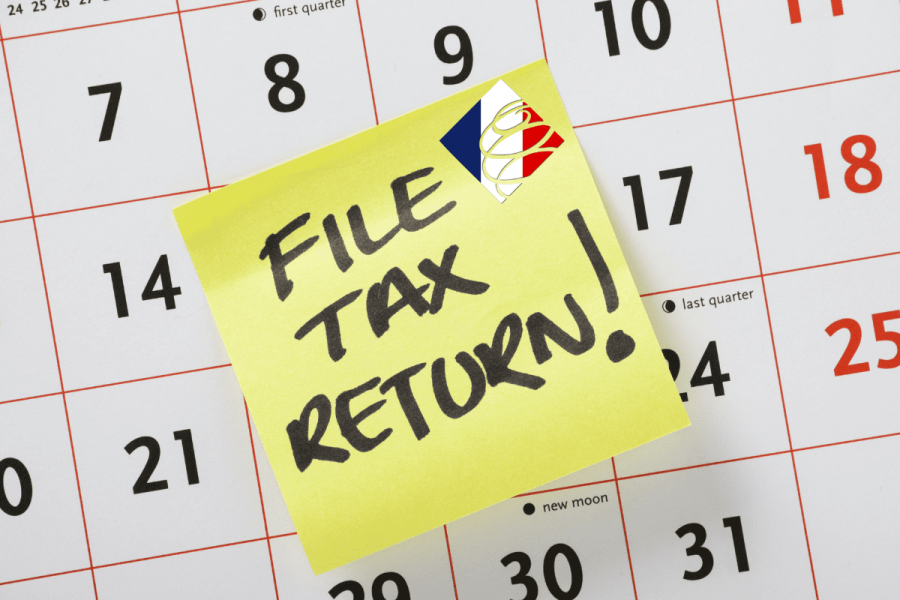
As tax residents in France, you have to declare your worldwide income irrespective of where it comes from. Not everything is taxable, depending on the provisions of the double tax treaty, but everything is declarable. One of the things you do not need to worry about is any French sourced income like salaries, French pensions, French bank interest. This information is generally already completed on your tax return so you just need to check that it is correct. You only need to declare your foreign bank accounts on the 3916 form and not any French accounts or investments.
Tax offices often get confused about what foreign income gets a tax credit under the double tax treaty and what gets a tax credit because it was actually taxed in the country in question whereas, very often, because the income falls under the tax threshold the income wasn’t actually taxed. Well the French Administrative court, the Conseil d’Etat has just confirmed in a decision dated 20th March 2023 (https://www.legifrance.gouv.fr/) that where a double tax treaty grants a tax credit on this income, this is not subject to whether or not the income has in fact been taxed in the country from which it originated.
Finally, an additional energy cheque of an amount of between €48 and €277 depending on income, will be sent out and can be used until 31st March 2024 to pay gas or electricity bills. This is in addition to the exceptional energy cheque and the wood and fuel cheque that have been sent out already.
I will be available for meetings except for the week commencing 17th April as I will be away with my family. But there are still plenty of slots for meetings in the second and last week of April. Please do get in touch with any tax or financial questions.
Arts Society de La Frontera
By Charles Hutchinson
This article is published on: 11th April 2023

The Spectrum IFA Group again co-sponsored an excellent Arts Society de La Frontera “Live” lecture on the 15th March at the newly renovated San Roque Golf & Country Club on the Costa del Sol. We were represented by one of our local and long-serving advisers, Charles Hutchinson, who attended along with our co-sponsors Currencies Direct represented by Ignacio Ortega, Carol Schleisman and Cristina Ruiz. Also present was the society’s European Chairman Jo Ward.
The Arts Society is a leading global arts charity which opens up the world of the arts through a network of local societies and national events throughout the world.
With inspiring monthly lectures given by some of the UK’s top experts, together with days of special interest, educational visits and cultural holidays, the Arts Society is a great way to learn, have fun and make new and lasting friendships.
At this event, over 50 attendees were entertained by a talk on The Manufactured Woman which is the story of Pandora, her box and the reasons for her creation by Mary Sharp of BBC Radio 4 fame. She gave an interesting talk showing comparisons with other created female characters such as Eve in the Bible and Eliza Doolittle in Pygmalion and the later My Fair Lady.
The talk was followed by a drinks reception which included a free raffle for prizes including CH supplied book on Dutch Art and Champagne. Smart Currency Exchange also supplied wine presentation cases with glasses and Brandy.
All in all, it was a good turnout and a successful event at a wonderful venue. The Spectrum IFA Group was very proud to be involved with such a fantastic organization during its current global expansion and we hope to have the opportunity again at the November lecture.
Is my money safe?
By Andrew Lawford
This article is published on: 7th April 2023

The banking sector appears to be in the midst of a wobble at present, so it seems like a good idea to examine exactly how worried we all should be about our banking arrangements.
As no doubt everyone will have read, the current concerns have been triggered by Silicon Valley Bank, an institution the existence of which I was blissfully unaware until it suddenly collapsed. On examining what happened to SVB, the most startling thing to me was that it essentially suffered a good, old-fashioned bank run: depositors lost faith, ran for the exit and, well, you know the rest. The bank didn’t even have particularly exotic lending practices – most of its problems were caused by the fact that it had purchased government bonds with relatively long maturities, which had suffered temporary losses due to rising interest rates (the value of a bond will fall as interest rates rise, but this generally won’t result in a loss if you hold it until maturity).
If the crisis had been circumscribed to SVB and a couple of other similar banks in the US, we might all have gone on without further thought, but then all of a sudden we found out that Credit Suisse was in trouble. Was this the same sort of crisis, or something new? In reality, CS had, in the words of one analyst: “spent the last decade finding astonishing new ways to lose money and embarrass itself”. Some of the best examples of this were: allowing drug money to be laundered in Eastern Europe, getting caught up in a corruption scandal in Mozambique, channelling client funds to a fraudulent trade finance lender and a spying episode involving management and former employees. It is fair to say that CS had made its bed quite well and recent events finally forced it to lie down.
Once we had digested the idea of CS’s failure, then the market started to be concerned about Deutsche Bank – another institution which stands as an example of the colossal risks emanating from global banks with a wide variety of activities, from retail to investment banking and everything in between. For the moment, at least, it would appear that the markets have been soothed somewhat, but one could be forgiven for being concerned over the safety of one’s money in the current environment.

How safe are deposits with Italian banks?
Turning to the safety of Italian banks, we need to examine the provisions of Italian depositors’ insurance, which is available up to €100,000 per account holder (so if you have a joint account, for example, you get €100k for each person). Opening more than one account with the same bank doesn’t change anything, but opening an account with another bank would give you a further €100k for funds deposited with that bank.
As always, however, there are a number of devils in the detail, and the FITD (Fondo Interbancario di Tutela dei Depositi), the entity that provides the guarantees, has its fair share. First of all, it should be noted that all banks licensed in Italy must adhere to the FITD, which functions like a mutual guarantee system. What this means is that if a bank fails, the FITD basically has a whip-round amongst the other member banks in order to make good on the guarantee. This might be all well and good when the bank in trouble is some rustic banca popolare, but if it happened to be one of the big names, then this would almost instantly translate into a systemic crisis whereby trying to prop each other up would lead to them all falling over. The image that comes to mind is that of a group of drunks staggering down the street trying to keep each other upright. At that point the big question would be whether, and to what extent, the state would step in to provide a blanket guarantee. The current orthodoxy in such matters would seem to imply that some sort of guarantee would be forthcoming, although obviously much would depend on the state of the public finances at the time.
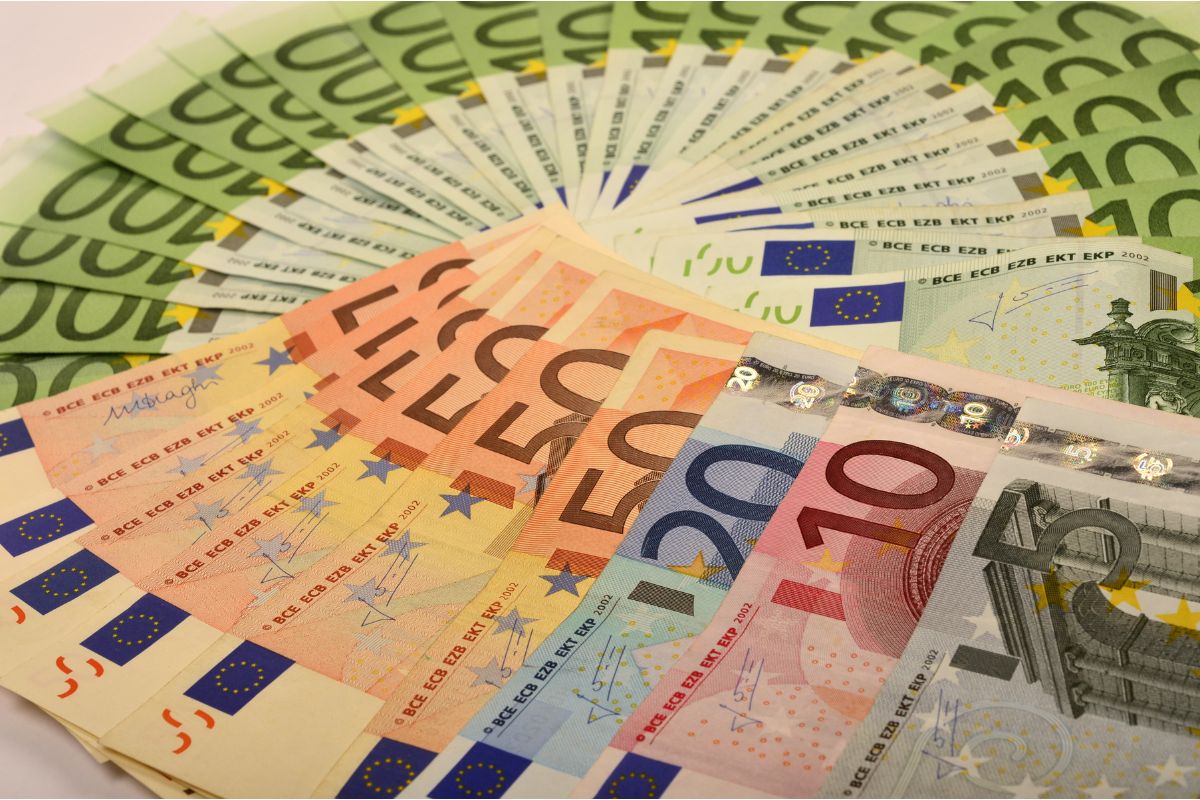
The mechanics of FITD guarantees
The FITD has been in existence since 1987, but only recently has its name (“Fondo” meaning “Fund”) actually corresponded to the reality of the situation. Up until 2015 the guarantee was totally unfunded, but a 2014 European directive obliged member states to institute depositors’ guarantees of €100,000, and for these to be pre-funded in the measure of 0.8% of the total guaranteed deposits by 2024. As of the end of 2022, the FITD had funds of €3.3 billion to cover €740 billion of guaranteed deposits (i.e. those under €100k), so roughly 0.44% of the total. The FITD forms part of EU and Italian banking regulation mechanisms and has been used primarily as part of various solutions contrived to avoid failure for struggling banks in the first place. In fact, since 1987 the fund has paid out about €3.3 billion, of which only €77 million was used to make depositors whole, with the rest being used to fund “solutions” to avoid collapse – the most recent example of this being Banca Carige which received €530 million as part of its sale to Banca BPER in 2022.
In the background, the EU is working towards EDIS – the European Deposit Insurance Scheme – which would institute a pan-EU fund as part of the banking union, but the machinations of this project have yet to be worked out satisfactorily, so for the time being we are stuck with national systems, albeit ones offering similar guarantees.
So what does this mean for me?
Notwithstanding the inherent weakness of a system based on mutual guarantees as described above, it would appear that the €100,000 minimum would be respected in any reasonable scenario. It also seems likely, based on past form, that the state would intervene to encourage a solution in any critical situations long before even a relatively unimportant bank actually failed. The fact that the depositors’ insurance is based on an EU directive also seems to imply that any need for state intervention to guarantee the basic level of depositors’ protection would be supported by the EU. So on the basis of all this, it seems reasonable to choose your local Italian bank by considering the services it is able to provide you as opposed to any perception of its security.
The proviso to the above is that you make sure to maintain only a modest amount of money in any bank and look at more secure solutions for the bulk of your financial assets. In this context, EU investment wrappers remain the gold standard for Italian residents, offering greater levels of protection as well as myriad other benefits – please take a look at this article – and get in touch if you’d like to explore how this might work for your own situation.
Tax tips for living in Spain 2023
By Barry Davys
This article is published on: 3rd April 2023
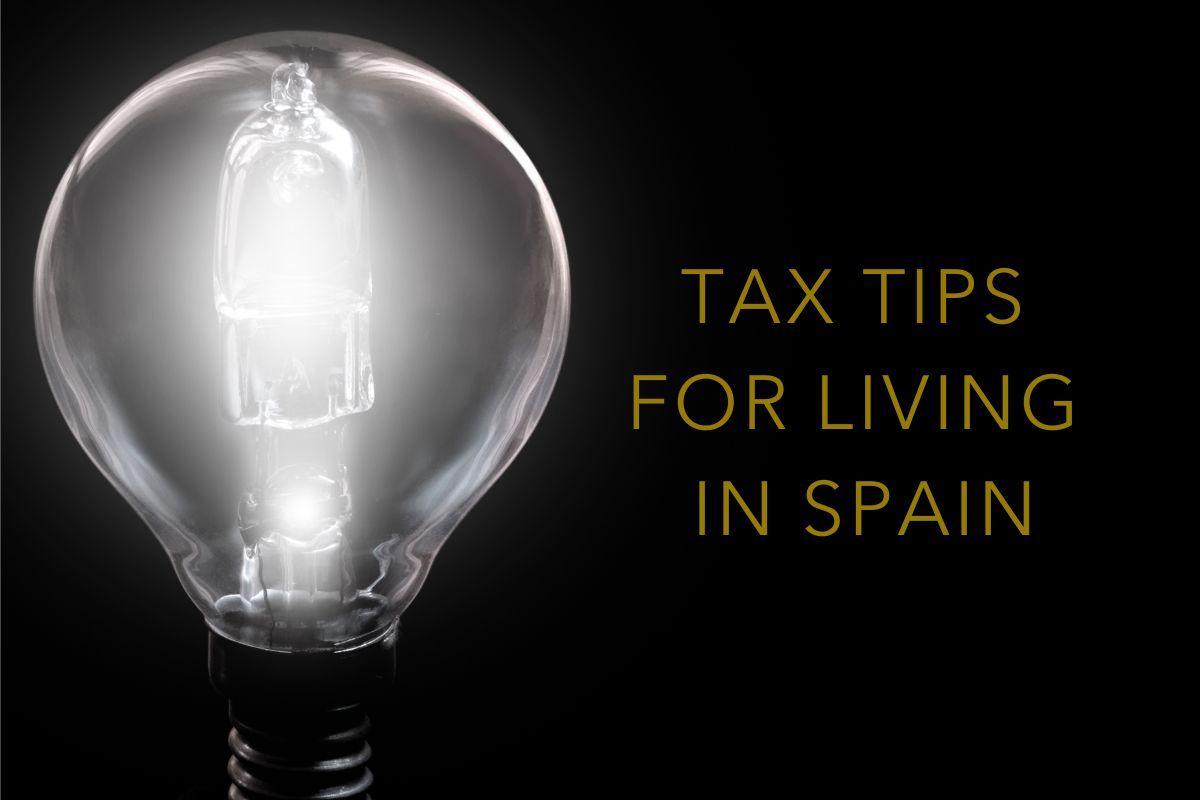
Whether you are thinking of moving to Spain or already living here, tax is a major part of your financial life that needs to be considered and planned for carefully.
1. In the UK, probably the best savings vehicle is an Individual Savings Account (ISA). This is because the income and capital growth is free of income tax and capital gains tax. It is, however, a UK tax scheme and is not recognised in Spain. Selling your ISA whilst you are still a UK tax resident can save you paying tax in Spain both on an ongoing basis and when you sell. There are also options where you can replace the ISA investments with very similar ones in Spain in a tax efficient manner once you have sold your ISA.
2. If you can, take your 25% tax free lump sum from your pension before you come to Spain. Again this is a UK based tax rule and it does not exist in Spain. You may be able to take part of a pension without tax in Spain, but there are rules and conditions. In the UK it is a clear rule and we recommend taking advantage of it. Like the ISA it is possible to reinvest the money with similar investments as you had in your pension on arrival in Spain.
3. You can pay into a UK private pension for up to five years on leaving the UK and continue to receive tax relief on the contributions. You will need to start the pension before you leave the UK. The limit is a maximum of £3,600 per annum but you only pay £2,880. The government will pay your pension company the difference to make it up to £3,600. A husband and wife paying into a pension for five years would qualify for a UK Government “top up” of £7,200. At the end of five years they would have a pension pot of £36,000 which will remain free of income tax and capital gains tax in Spain, until you start taking money from the pot.
4. Do you need to top up your National Insurance Contributions to improve your UK state pension? It is easier to do this before you leave the UK.
5. The sale of a main residence in the UK is free of capital gains tax. In Spain, the rules are different and you may have to pay capital gains tax on the change in value between the purchase price and the selling price of your home. As an example, a £200,000 gain (not at all uncommon if you have had your house for 10 years) could mean a tax bill of £44,800.
6. If you and your family are considering inheritance tax planning, consider making or receiving gifts before you leave the UK. These gifts can be potentially exempt from UK inheritance tax. In Spain, they would be subject to gift tax.

Once you are living in Spain
7. Are you eligible for the “Beckham Law”? This is a law that was introduced to encourage skilled workers to Spain. The tax rate is set at just 24% for your employment income for a period of five complete Spanish tax years. This is the part of the scheme that you will see most heavily promoted.
However, the scheme also allows you to receive capital gains and investment income from outside of Spain without paying Spanish tax. Careful structuring of your affairs can lead to a plethora of planning opportunities. Perhaps the biggest opportunity is selling your UK business and paying 0% tax on the sale. For further information please email barry.davys@spectrum-ifa.com
8. If you are approaching retirement or retiring to Spain, it is possible to save tax on the income you receive by planning the source of your income. As a brief example, pension income is generally taxed as employment income and taxed at your highest rate. Drawing funds from an investment can result in tax as little as 2%. From another source there can be 0% tax. To benefit from this planning it is important to have an adviser who understands your situation and requirements at the same time as having a clear understanding of how investments are taxed in Spain.
9. Different investments attract different tax treatments in Spain in the same way as they do in other countries. There are investments in Spain that are taxed more than others. Try to use the lower tax ones where the investment matches your requirements. You can benefit from many years without paying income tax and capital gains tax.
10. In Spain, inheritance tax is based on taxing the person receiving the inheritance rather than taxing the estate of the person who has died. If inheritance tax is a concern, with the right advice you can build a plan which manages the amount of tax due. The bedrock of the plan should be that you are not left short of money in later life. Your plan should then match your personal requirements. Some planning is simple and straightforward, so it is worthwhile looking at inheritance planning before events overtake you.
11. Are you considering returning to the UK? It is also worthwhile thinking about the possibility of an unplanned return to the UK if one partner were to die, for ill health or ill health of a family member in the UK such as a parent. If a return to the UK is a possibility, make sure you have the type of investment which will not tax you in the UK for the time you have spent in Spain.
The banking industry
By Jeremy Ferguson
This article is published on: 28th March 2023

What is wrong with the way some banks work nowadays? It seems to me you can run a poor show, and when things go badly wrong the central banks will bail you out, and then off you and your highly paid colleagues can go again to mismanage your way to the next catastrophe.
The one thing I explain to people time and time again is that when you deposit any of your hard- earned cash in a bank, the bank has it is on ‘their’ balance sheets. They can then use that to go off and lend money or invest in assets where they can make more money. So effectively, they are using your money to make themselves money. The problem is that a lot of what they do may need a long timeline to work, so if people start demanding their money in large numbers (known as a run on the bank), they may not actually be able to meet those requirements, hence they close the doors to withdrawals.
Years ago a run on a bank would take time, with people literally queuing around the block looking to withdraw their money from the person behind the counter. The trouble nowadays is that a run on the bank is so much easier to implement, with all of us having apps on our phones and laptops that mean we can ask for our money in an instant. That was one of the biggest issues contributing to the failure of Silicon Valley Bank in America a couple of weeks ago, and the start of this whole process of fear beginning again. Due to the frenzy of concerns about that bank being whipped up on social media, thousands of clients started to try and withdraw their deposits all at the same time. To say the run on the bank happened quickly would be an understatement.
It is interesting to see what happened by looking more closely at what went wrong there. The bank had a huge amount of funds on deposit, and although they were large lenders, they had a lot of excess cash doing nothing for them. They needed that to be making money for them so, in their view wisely, they bought a large amount of 10 year government bonds. They did this because government bonds are traditionally seen as safe and would earn a small return.

Then the Fed started raising interest rates in a bid to stem inflation. Of course, this then meant the value of the government bonds became more and more stressed the higher the rates went. Effectively the clients’ money was now in the wrong place and couldn’t easily be unwound. In simple terms, a pretty basic error which you would hope someone looking after your money should have been aware of.
As I write, the contagion this whole issue has caused in the banks is causing share prices to tumble again. It’s so frustrating when this sort of thing happens, as very often it’s the baby being thrown out with the bathwater, but unfortunately this is how the stock markets tend to be. Anyway, it never seems to change and the fact that the Fed raising interest rates has led to the banks ´´crumbling´´ is somewhat bizarre in my humble opinion, when they seem to think they know what they are doing!
I speak a great deal with clients about using ‘insurance’ based products to house their investments. The reasons and advantages are many but the most relevant point I like to make, and relevant to what I’ve been talking about, is when you invest your money in these companies it is physically off their balance sheet and held for your benefit only. That’s the polar opposite to leaving your money in the bank. Of course, the risk is then what you do with your money, but it’s a massive point that is regularly overlooked and gives people a high level of comfort.
If you are worried about your money and where it is at the moment please feel free to get in touch and we can see what alternative solutions may be available for you.
Finance Update Q1 2023
By Peter Brooke
This article is published on: 27th March 2023

The Great Moderation & The Next Decade.
Is it really different this time?
The finance industry is often guilty of a very short term view. I read at least two emails every day that focus solely on the last 24 hours, which is probably not particularly healthy. It is also ironic that my industry then tells all its clients to only judge performance over the medium to long term … whatever that means.
Of course, understanding how daily events can affect performance is important, but from time to time we really must put this into the context of the long term, and sometimes the VERY long term.
Our friends at Evelyn Partners have created a terrific piece of research considering the last 40 years (yes, 40) and then looking forward at the next decade, where they feel there really is something different happening. Here I will summarise their musings – I hope you find it interesting.
The Great Moderation 1980 to 2020
The economic impact of China’s emergence over the last 40 years has contributed to lower inflation and lower interest rates this impact is particularly characterised by
- Favourable Demographics
- Movement of workers
- Globalisation
1. Favourable Demographics – massive growth in global population AND in the numbers of ‘working age people.

2. Massive movement of workers from rural regions into new cities facilitated rapid growth in manufacturing and economic output.

3. Globalisation enabled advanced economies to tap into this pool of cheap labour. But it now seems to be slowing…

The economic impact has been significant: 40 years of falling inflation and interest rates!!


The Next Decade
So is it really different this time?
YES – We are at an inflexion point. 4 “Megatrends” will shape markets over the next 10 years – and beyond!
- Shifting Demographics
- Changing World Order
- Bumpy Energy Transition
- Technological Revolution
1. Shifting Demographics: The old-age dependency ratio is set to increase sharply & population growth will slow
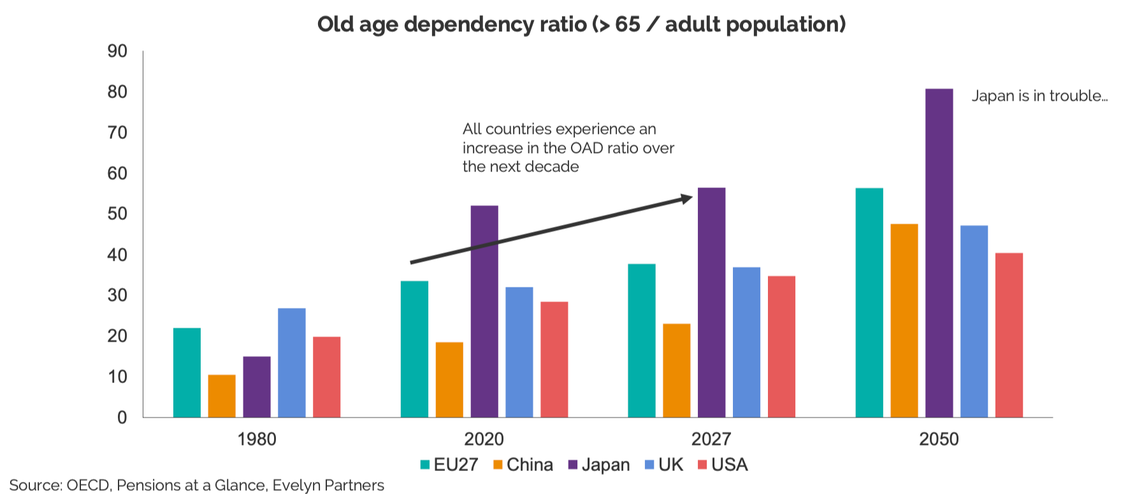
2. Changing World order: US-China decoupling and the war in Ukraine will result in ‘slowbalisation’.
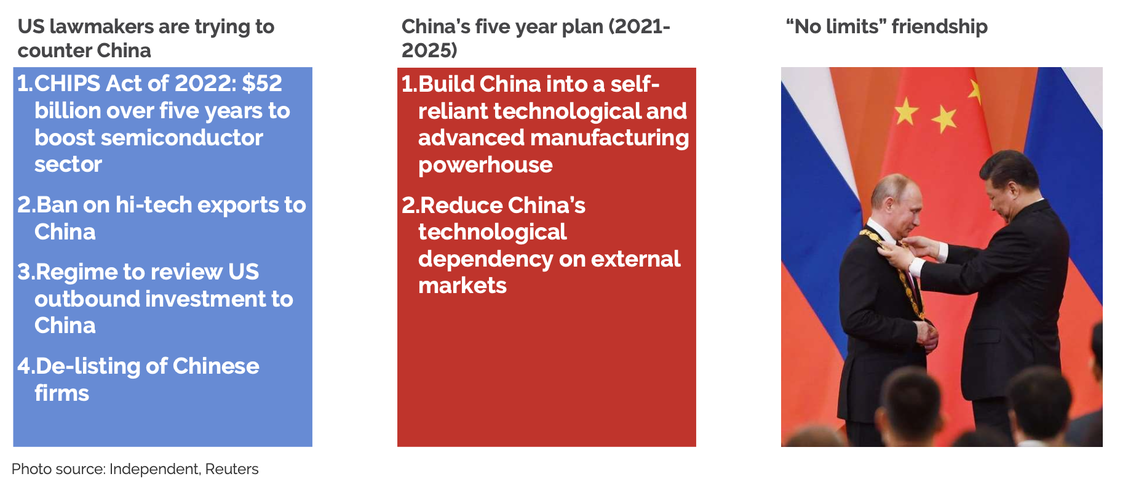
3. Bumpy Energy Transition: The war has undermined energy security & accelerated the energy transition… But the transition is likely to be bumpy. It will bring new energy trade patterns and geopolitical considerations into play…
Who really owns the infrastructure which will help our Energy transition?
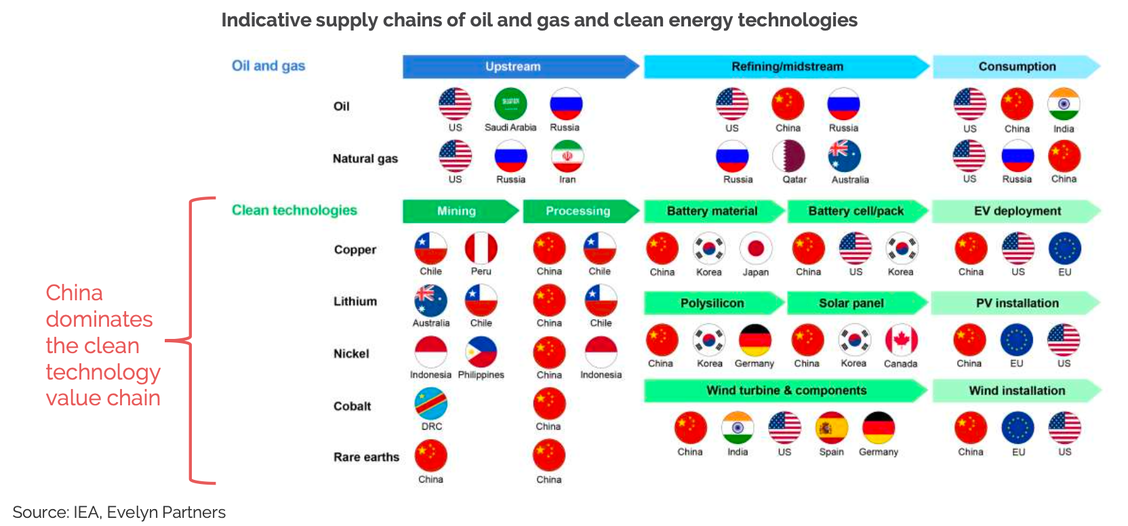
4. Technological Revolution: New technologies will underpin the future of business and most areas of our lives… for example Artificial Intelligence and Automation

So if we really are entering a genuinely different world, how do we manage our money over the next decade and beyond?
All of these factors will present challenges AND opportunities and so it is important to align our approach to benefit as much as possible from these opportunities and minimise the risks of being on the wrong side of the challenges.
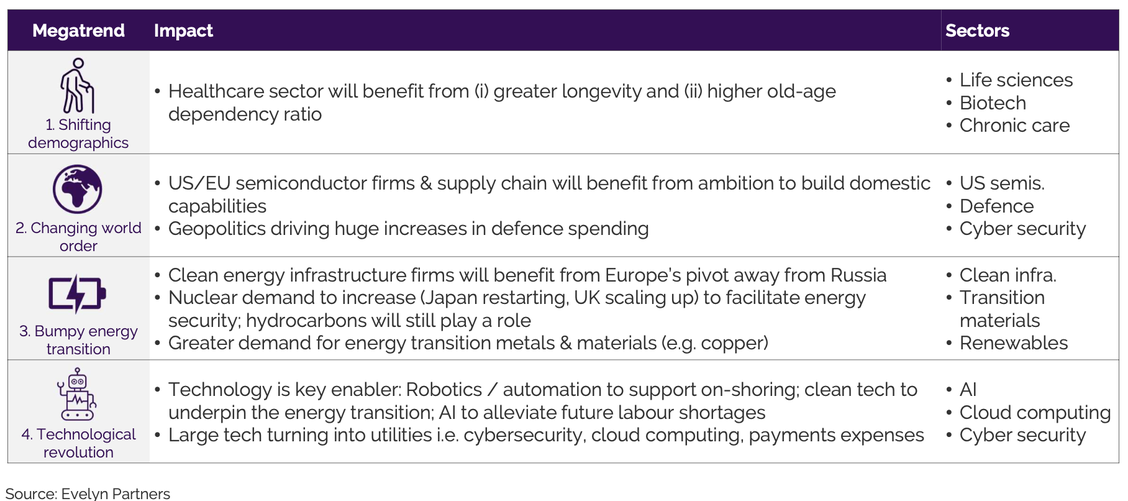
Is it time to review your investments?
I hope this ‘longer term’ view has helped you put your existing investment choices into perspective or helped you when choosing new investments.
If you want help with reviewing existing or choosing new funds then don’t hesitate to get in touch.
I want to sincerely thank the team at Evelyn Partners, one of the investment management firms we work closely with, for this excellent piece of research and its refreshingly long term approach.
For more information on this please visit Evelyns Megatrends Hub here www.evelyn.com/good-advice/megatrends/
Make a time to call – it’s good to talk
If we haven’t spoken recently and you want to get in touch via my new booking system then please click on the link to book a quick call.
I have linked my diary to the excellent ‘Calendly app’ which allows us to arrange our next call, zoom or face to face meeting more easily – feel free to forward to family or friends who might need my services.
Tax time in Italy
By Gareth Horsfall
This article is published on: 22nd March 2023
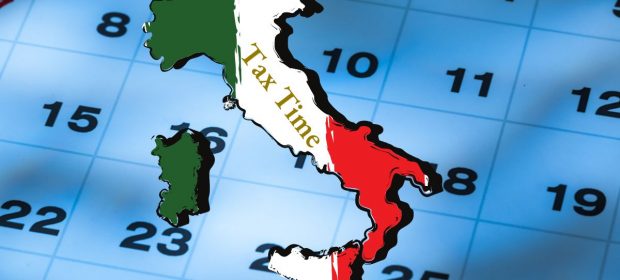
2023 is the year that I turn 49 years old. Where do the years go? 50 next year and strangely enough I don’t feel as anxious about it as I thought I would. I actually feel quite good about it, and I have made some personal commitments to spend more time in nature and exercise regularly, but not excessively (I suffered glandular fever a few years ago and so can’t workout as hard as I used to).
It was on one of those walks in nature recently that I actually thought that it’s about that time when our commercialisti start asking us to send our financial information for tax calculation and payment. (unless you are one of those people who is well prepared and has done it already).
Of course, we always have to supply a full list of our incomes and assets (Italian and foreign), bank accounts and properties and taxable assets. However, I am not sure about you, but my commercialista doesn’t really give me much information on the corresponding list of deductions and detractions available to offset/reduce some of our tax bill, so I thought I would write this article to provide you with a full list for the financial year 2022. [A reminder to always check your tax return, once filed by your commercialista, to ensure that errors haven’t been made, especially on the foreign assets section Quadro RW . See my article on this for more information Declaring taxes in Italy
Some of these may be relevant to you, others not, but at least you have the list which you can refer to and always share with others, if you think it might help. There are distinct categories ranging from family expenses to renovation/property expenses as well. Also remember that in ALL cases now, to claim an expense you MUST have paid by electronic/traceable means i.e. bonifico (bank transfer) or carta di credito and you MUST have a corresponding scontrino fiscale in the case of things like farmacia expenses. For larger purchases a fattura (invoice) is required. Without the necessary document you will not be able to claim back the tax relief.

So, without further ado, here is the list:
SPESE FAMIGLIARI
These attract a detraction of 19% of the full value of the expense.
- The abbonamento (pass) for local, regional and inter-regional public transport, up to a maximum of €250 for the cost of the pass
- A maximum spend of €530 or €1219,14 (depending on the type of policy) for life insurance, polizze per infortunio (accident) or permanent disability policies
- All costs for deceased family members i.e. funeral
- A €632 maximum spend per child for kindergarten cost (public or private)
- The costs of infant, (scuola infanzia), junior (primarie) and secondary (secondaria) schools. Also University, Conservatorio and AFAM (Instituto Alta Forma Artistica Musicale Coreutica)
- Costs for students diagnosed with DSA (disturbo specifico dell’ apprendimento) – a category of ADHD
- A maximum spend of €210 for the costs of sport for children until 18 years old
- A maximum spend of €2633 for the costs of rent for students who are living away from their home region, including abroad
-
A full deduction of contributions into an Italian private pension scheme (previdenza complementare) up to an annual limit of €5164,57

SPESE PER LE CASE
- A 19% detraction on mortgage interest, where it has been used for the purchase or construction of the ‘Prima Casa’

SPESE MEDICHE
These all attract a 19% detraction:
- On a spend more than €129,11 for pharmaceuticals, ticket, hospital costs, specialist services and surgery costs. Analisi, thermal cures (when prescribed), medical equipment, glasses and/ or contact lenses that meet the CE standard
- Vets costs from €129.11 to €500 spend
- Costs to assist with maintaining personal independence e.g. the purchase of a vehicle necessary to get to and from hospital. (Limited to a maximum spend of €2100 for those on incomes less than €40000pa)
- A maximum spend of €750 for the cost of life insurance where the benefit is for someone with a serious disability
- Other general medical expenses attract the 19% detraction on the cost, which can then be detracted from your or your family income, where they are being supported by you (a carico)
LIBERE DONAZIONI
the full cost of donations to:
- Cultural and artistic activities
- Cooperative entities in the cultural /artistic sector
- Associations
- Scholastic institutions of every type
- Funds donated to the Italian state
BONUS EDILIZIE
Restructuring and renovation costs
For the tax year 2022, the following deductions are available:
- 60% on the full expenses of repair to the outside of your property – specific criteria apply! BONUS FACCIATA
- 50% on the cost of restructuring with a max spend of €90000 or 80% of the total cost where it was used to restructure for seismic risks. BONUS SISMA
- 65% of the cost for interventions for energy saving measures around the home.
- 50% of the cost of furniture and big elettrodomestici goods (where they meet certain criteria) BONUS MOBILI
- 36% on a max spend of €5000 for landscape work in the garden (reimbursed over 5 years) BONUS VERDE
- 50% for ordinary maintenance
- 75% for interventions for energy saving measures for condomini
- 110% SUPERBONUS for specific work
- From 2023 the 110% SUPERBONUS falls to 90% (but is likely to be fraught with the same issues as the 110% bonus, in my opinion)
- 50% of the cost of installing an electric car recharging column
Where you have an income up to €120,000 pa the expenses, as described in this article, will be fully allowed. Where your income is over €120,000pa then the detractions will be reduced according to a formula based on your total income.
And that’s it! Everything that you can detract from your income in 2022 to try and reduce your tax bill in Italy. If that doesn’t make a difference, then you may need to have a look at your overall finances to try and plan in different ways.

Possible Italian tax changes
It should be noted that the Meloni government is currently debating how they can follow through on their election promise to simplify the tax system by reducing the tax bands from 4 to 3, in the coming year, and then hopefully moving to a 2 tax band system. If they manage to pass this then they will likely reduce/remove the system of detractions/deductions by lowering the bottom rate of tax, or maybe introduce a starting rate tax allowance for everyone (unlikely, in my opinion. The talk is that an allowance may be offered to workers [not self-employed] and pensionati) However, they are in first stage negotiations and it may be some time before things come to pass.
The other thing they are currently discussing is simplification of the taxation of investment income and gains. Presently income and gains from certain types of investments cannot be offset against losses from the same investment. A system they called ‘redditi di capitale’ e ‘redditi diversi’. There is talk to remove this, what I consider a rather odd system, and have the same system as everywhere else, income, gains and losses from investment income treated in the same way.

Update on making Voluntary National Insurance contributions UK
Anyone who has a missing contribution record for UK National Insurance contributions in the UK between April 2006 and April 2016 will still have the opportunity to make up these contributions until the 31st July 2023, which will still give you the chance to increase your state pension entitlement from the UK. The previous deadline was the 5th April 2023.
The reasoning behind this decision from the UK government is that from April 2023 anyone retiring will need to have a national insurance contribution record of 35 years to receive the maximum state pension. Between 2006 and 2016 different maximum contribution periods may have applied and therefore the UK government is giving you the opportunity to maximise your contributions until July 2023. After this time, it will only be possible to repay the missing previous 6 years contributions in your national insurance record. If you want to know more, you can look at the www.gov.uk website.
Bear in mind that the state pension office will likely be overwhelmed with requests at this time, so if you need to make a request for back payments then you may need to do so immediately, otherwise they may not be able to respond to you in time.
If you are unsure of your National Insurance contribution record then you can check it online at www.gov.uk/check-state-pension. You will need your UK national insurance number handy.
Income in retirement
By Jozef Spiteri
This article is published on: 21st March 2023
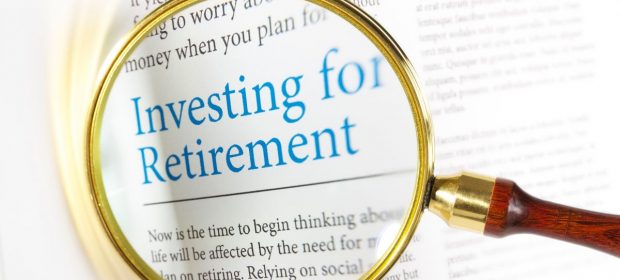
Following the previous article where we saw how investing can be used to increase levels of savings in retirement, we will now focus on how invested funds can be of added benefit when it comes to drawing an income in retirement.
We shall be making use of the same three scenarios we saw in the last article, where John had to choose between keeping all savings in cash, investing in a balanced risk portfolio or investing in a more adventurous portfolio.
In the first scenario John was left with cash reserves of €911,186 at retirement.
In retirement John aims to maintain his lifestyle whilst also taking two big trips annually with his partner. An estimated drawdown of €50,000 per year should allow this. In this case, cash reserves would last John 18 years. Considering that people nowadays are living longer, John will have some tough decisions to make. This may involve reducing the withdrawals made each year in order to stretch the funds as much as possible. Therefore, John will find it very difficult to maintain the retirement he wanted.
Looking at scenario 2, John will have an investment pot of €1,375,757 at retirement growing at 4% per year. If he were to withdraw €50,000 a year, this would represent a 3.6% annual withdrawal. This would mean that he would be taking out most of the average growth being achieved annually, which will more or less have his portfolio increasing by 0.4% per year net of drawdown. This will mean that John will not only be able to lead the life he wishes but also have a valuable cushion to protect against unexpected expenses which could arise in future.
The potential cushion with scenario 3 could be even greater with a savings pot of € 1,845,763 at retirement and an investment growing at an average 6% per year. John will be making an annual withdrawal of 2.7% of his portfolio leaving a net growth of 3.3% per year after drawdown. It’s often the case however that a more ‘balanced’ risk approach is taken in retirement.
This example illustrates the power of investment not only before, but during, retirement – compound returns within a properly planned investment strategy will often contribute towards achieving a secure and comfortable retirement.
The above are simplified examples and for illustrative purposes only. For a more detailed outline of how we implement successful investment strategies, please contact us to arrange an introductory discussion.















